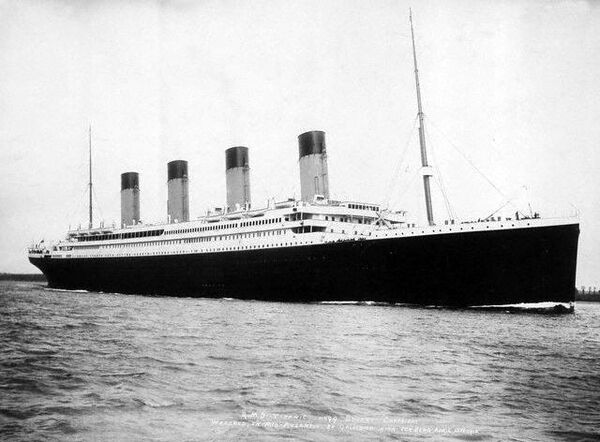When the Titanic collided with an iceberg, this was just the beginning of the disaster. The rescue operation was another link in the chain of mistakes, oversights and miscalculations made that night. Why were the ship’s lifeboats, in short supply to begin with, sent out to sea only two-thirds full?
The math of the tragedy
The Titanic’s lifeboats could accommodate only 1,178 passengers, whereas the Titanic carried 2,224 souls – 1,513 passengers and 908 crew. The liner’s total capacity was 2,556 passengers.
However, this was not a violation of maritime safety rules at the time. According to British Maritime Safety Regulations of 1899, a passenger boat with a displacement of over 10,000 tons was supposed to be equipped with at least 16 lifeboats.
The Titanic had 20: the required set of 16 boats – some for 65 passengers and others for 40 – was supplemented by four collapsible boats certified to carry 47 adults each.
Many claim that the typically low numbers of passengers on trans-Atlantic liners explained the owners’ reluctance to increase “useless load” – that’s how lifeboats were often referred to back then. Thus, the RMS Olympic – Titanic’s sister ship – normally carried up to 1,100 passengers across the Atlantic. Nevertheless, the number of lifeboats on Titanic would not have been sufficient even for these numbers, if the crew is counted.
The entire system had to be changed
Who was to blame for the fact that safety standards lagged behind the technological progress at the time, when increasingly larger ships were taking to sea and new safety rules had to be introduced?
Of course, there is no particular individual to blame. The existing approach to the sea safety system and the way regulations were analyzed and drafted were extremely unwieldy.
“I’m not sure why things are this way. They’ve always been this way,” is an excuse typically heard from the British Admiralty with regard to anachronisms in the Royal Navy. The same can be said of civil navigation at that time.
Hyperbolic ad campaigns about “unsinkable” super liners, heavily steeped in a Jules Verne-esque infatuation with innovative, also played their part. This attitude was so typical of the optimistic and positivist Europe as it hurtled toward World War I.
After the Titanic tragedy, the authorities required that there be enough lifeboats for all passengers and crew. Later, in the second half of the 20th century, this rule was expanded with a requirement that ships have 25% more seats on lifeboats than the total number of people on board.
The human factor
Even with this series of errors, the disaster could have been mitigated had the crew realized the scale of the problem in time.
The numbers involved in the rescue operation can be found in all sources covering the wreck. There were 1,178 lifeboat seats and only 711 survivors. Forty percent of the lifeboat seating capacity remained vacant.
The crew alone is responsible for this. Witness testimony reveals a lack of organization early on in the rescue operation: the first few lifeboats were sent out to sea less than one-third full. There were just 12 people in one of the first 65-seat boats that left the Titanic and as many as 70 in the last one.
Later, when it became clear that the Titanic would sink, they started filling the boats to full capacity, but it was too late. Only six people were picked up from the sea. Witnesses say that many boats were leaving the site after the liner sank, but the people in them didn’t take others aboard, perhaps for fear that the boats could capsize.
The distribution of survival rates by class is also striking. Out of the total number of First Class passengers, 33% of men, 97% of women and 83% of children survived. Second Class survivors included 8% of men, 86% of women and 100% of children. The Third Class survivors included 16% of men, 46% of women and 34% of children.
The lower survival rates of the Third Class passengers can’t be attributed exclusively to their lower social status. Third Class passengers were quartered on lower decks and needed time to make their way up.
Many passengers didn’t take the situation seriously and rushed upstairs only when it became obvious that the ship was sinking. Locked passages further aggravated the problem, since passengers had to look for other ways to get to the open deck. Many failed to do so.
The lower numbers of male survivors can be attributed to Captain Smith’s decision to save women and children first. This decision was thoroughly enforced by the Second Mate Charles Lightoller up until the moment the situation spiraled out of control.
Mr. Lightoller, who was in charge of the rescue operation on the left side of the ship, complied with the order to the letter: only several men made it onto the boats as rowers. First Mate William Murdock, on the right side, was more liberal and allowed men into the boats if there were no women or children around. Ironically, Murdock died, but Lightoller survived.
Out of 711 survivors, 189 were crew – 22% of men and 87% of women – almost 10 people per boat, which is unjustifiably high for this kind of situation.
Some researchers point to this as an aggravating factor, linking it to zealous compliance with Captain Smith’s order. By blocking access to the boats for men, the crew was subconsciously trying to save themselves, which is further proved by the uniform distribution of crew across the lifeboats and their high survival rates.
The Titanic disaster was the result of a great deal of mistakes, oversights and conscious actions that converged horribly one fateful night.
The views expressed in this article are the author's and may not necessarily represent those of RIA Novosti.



